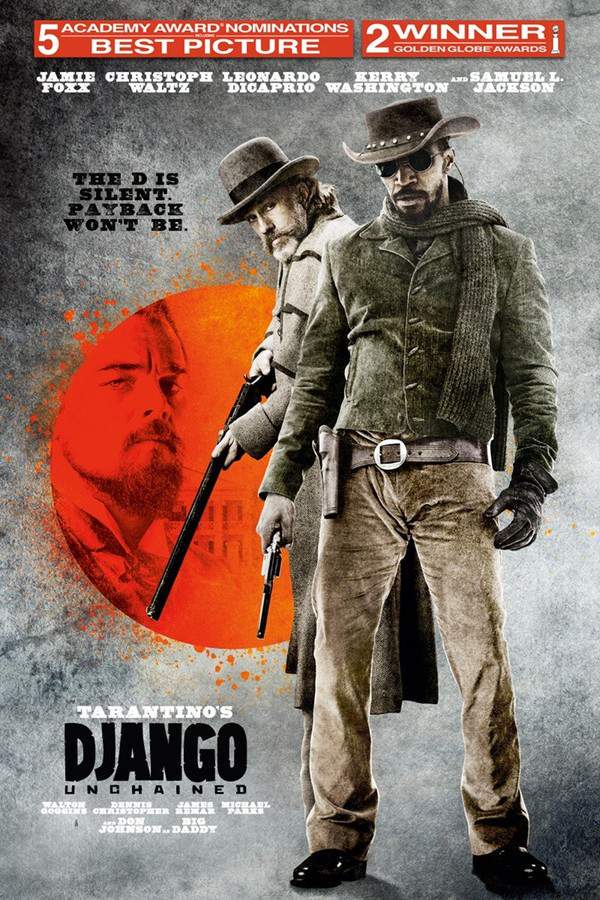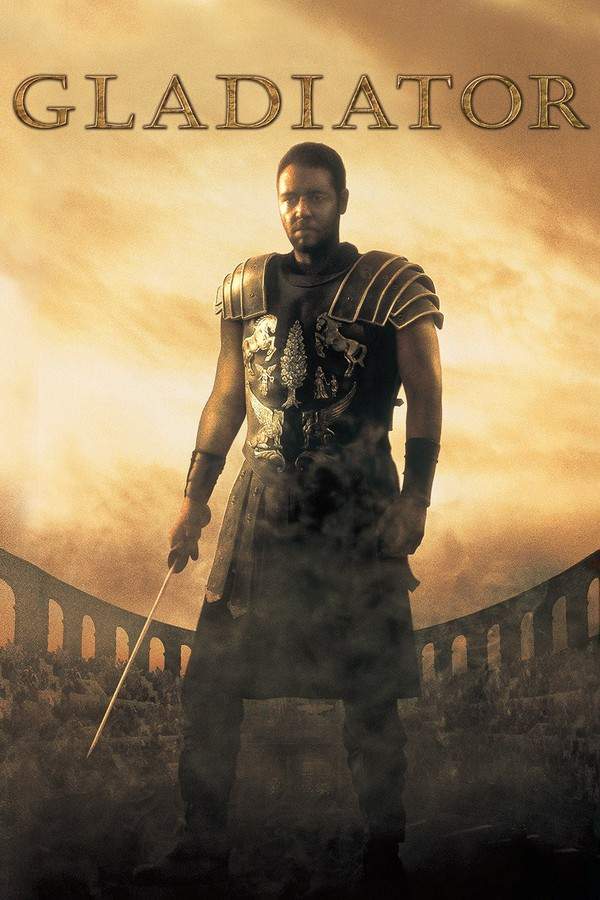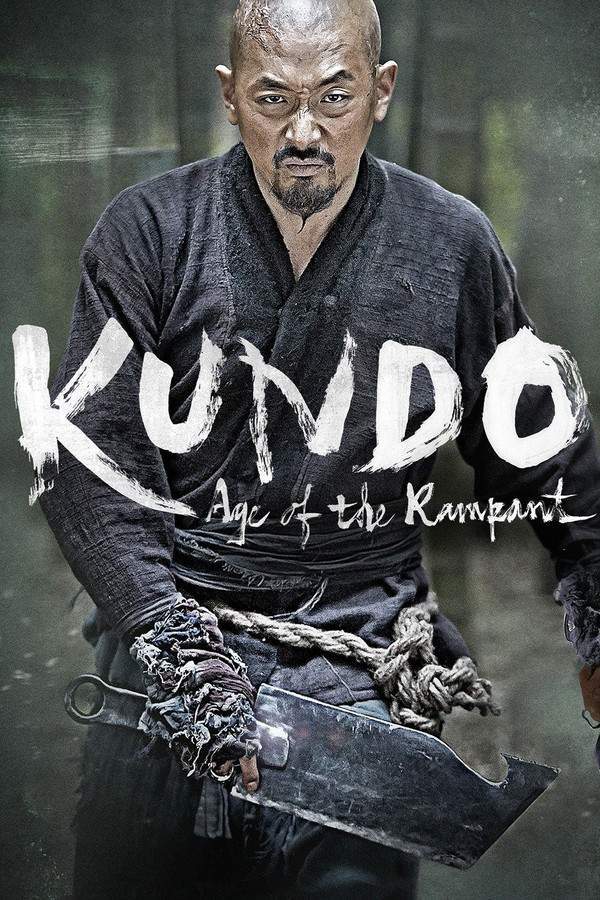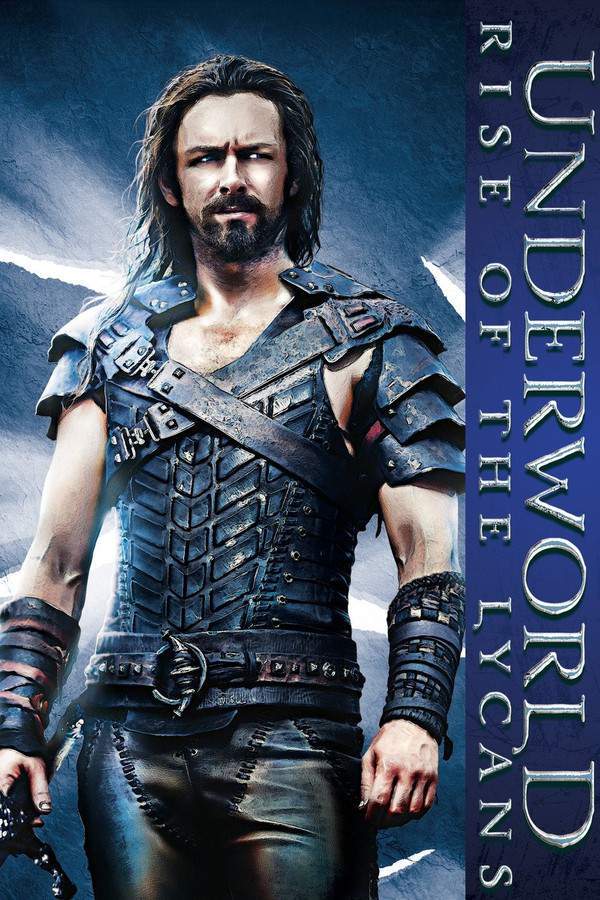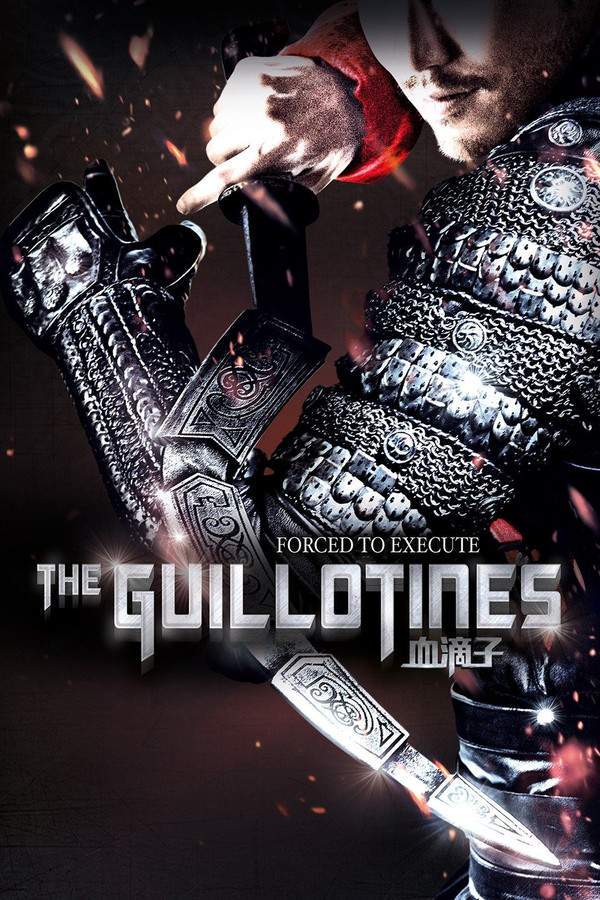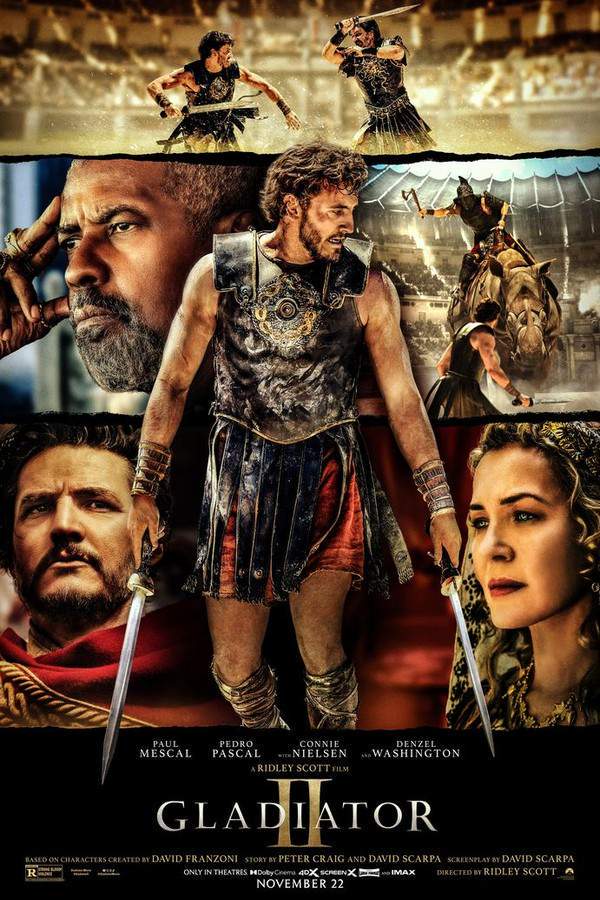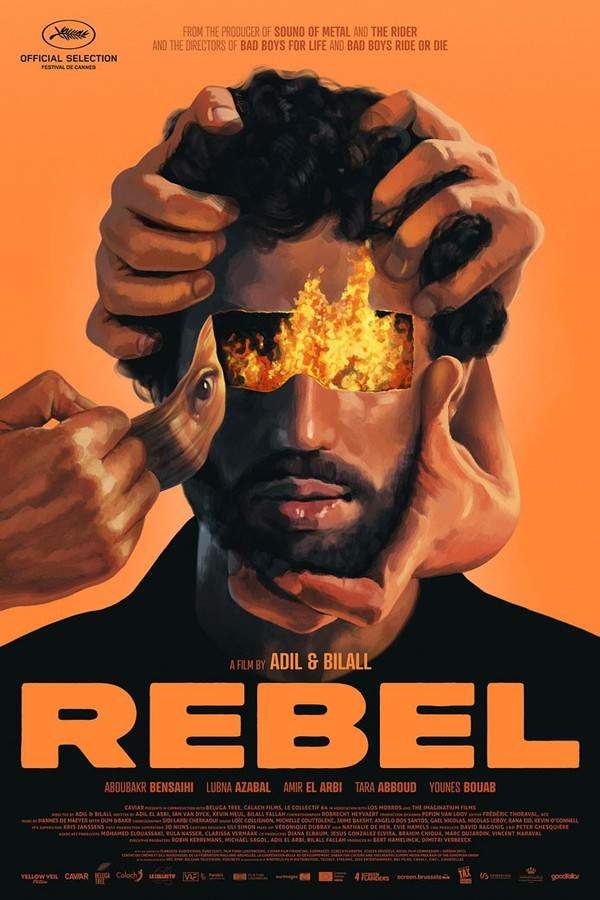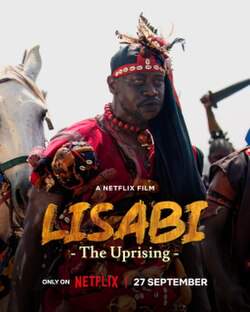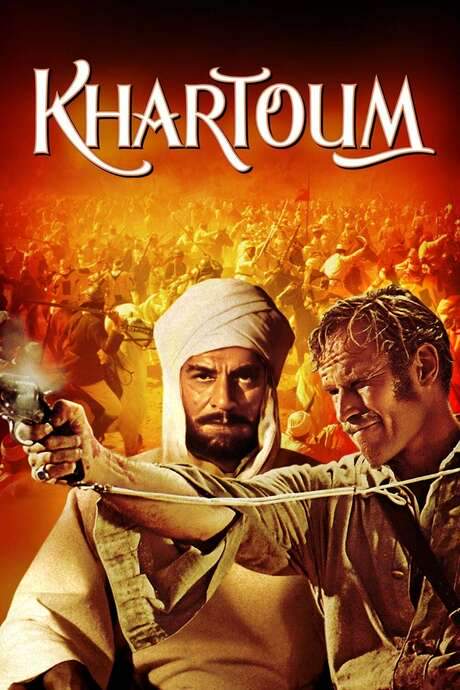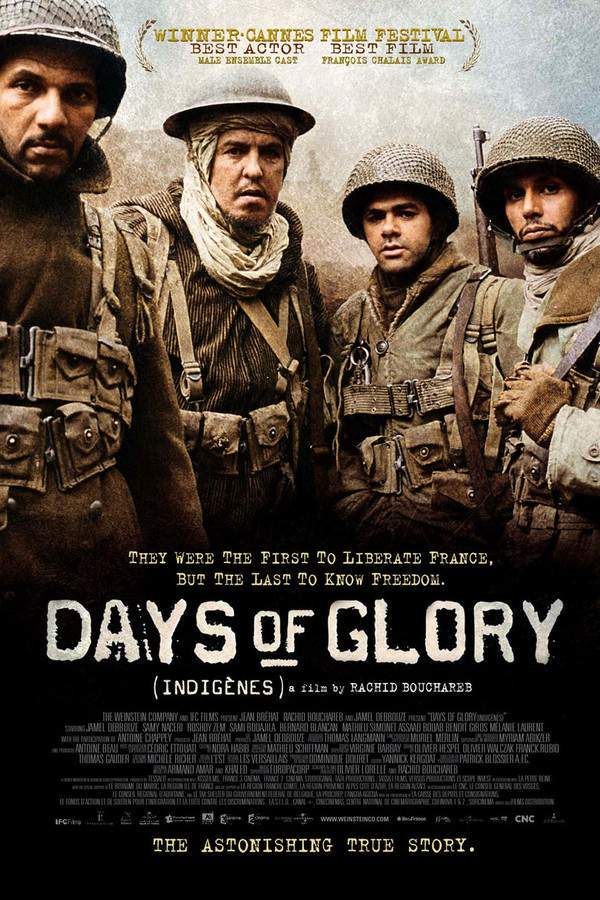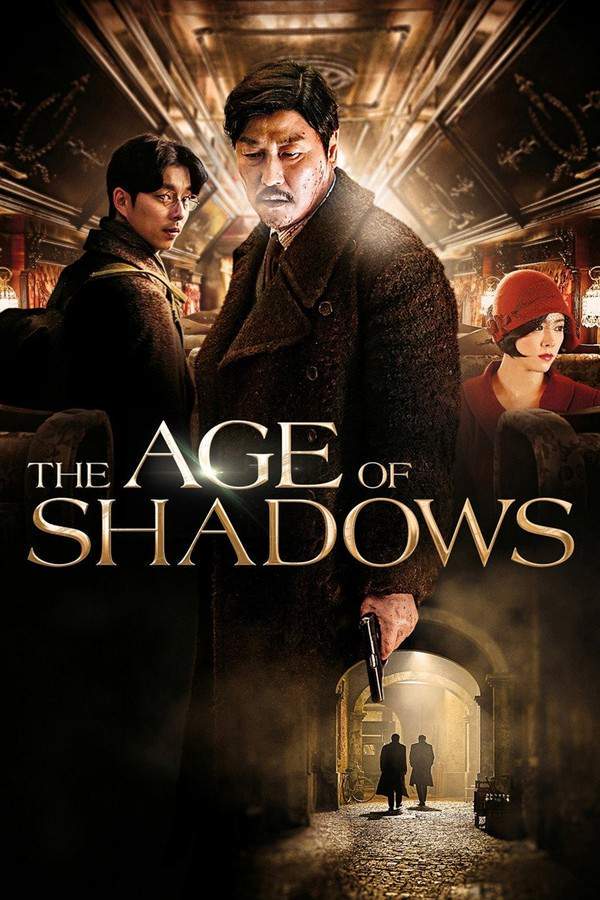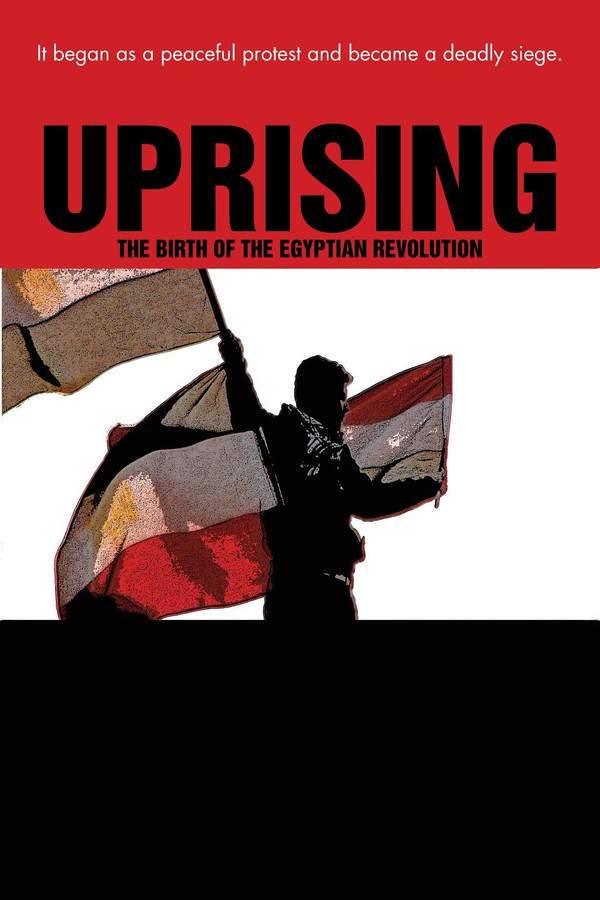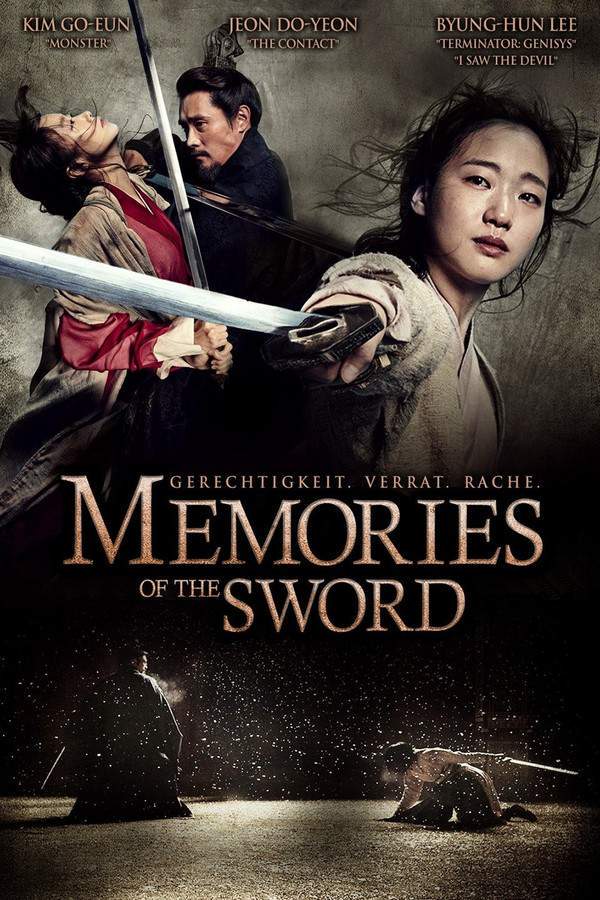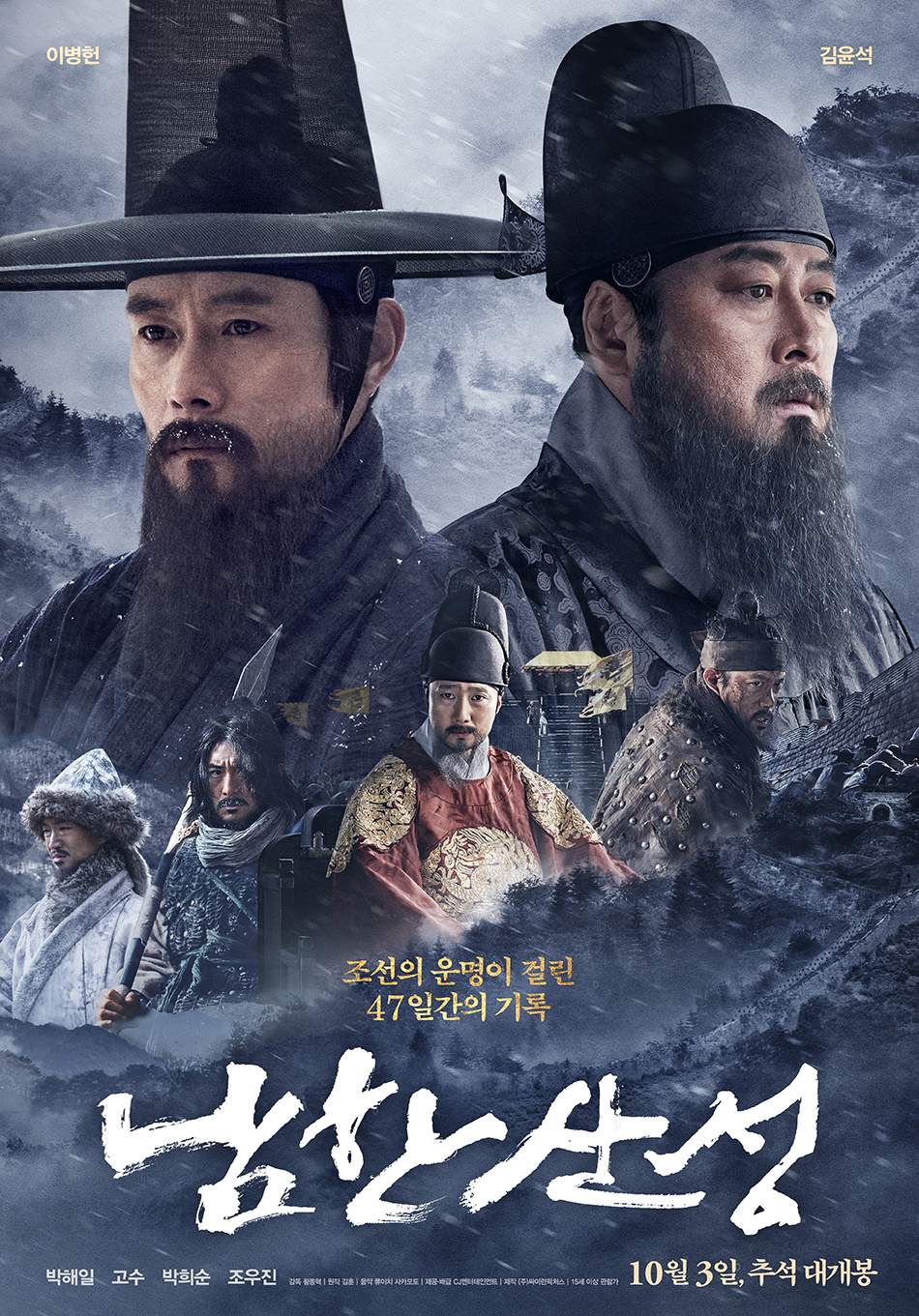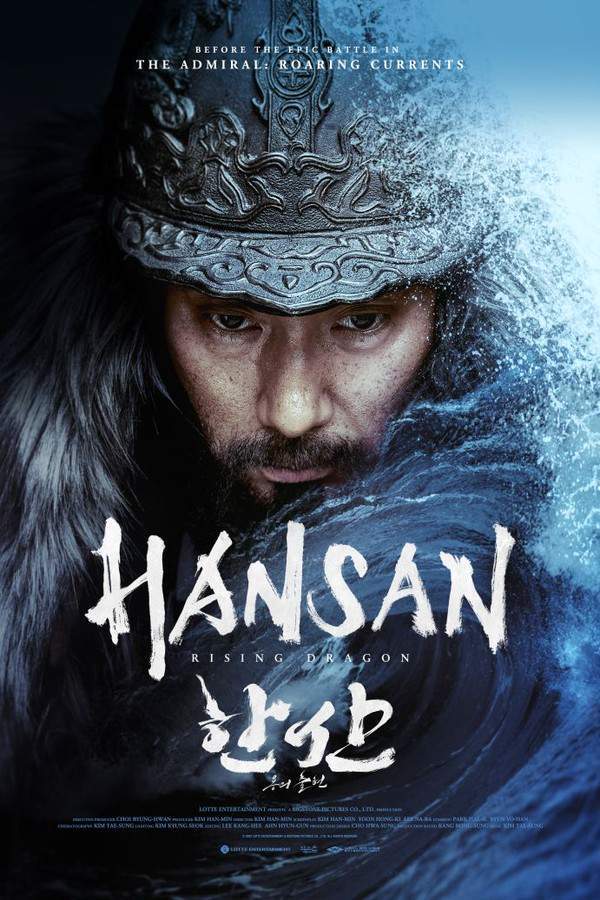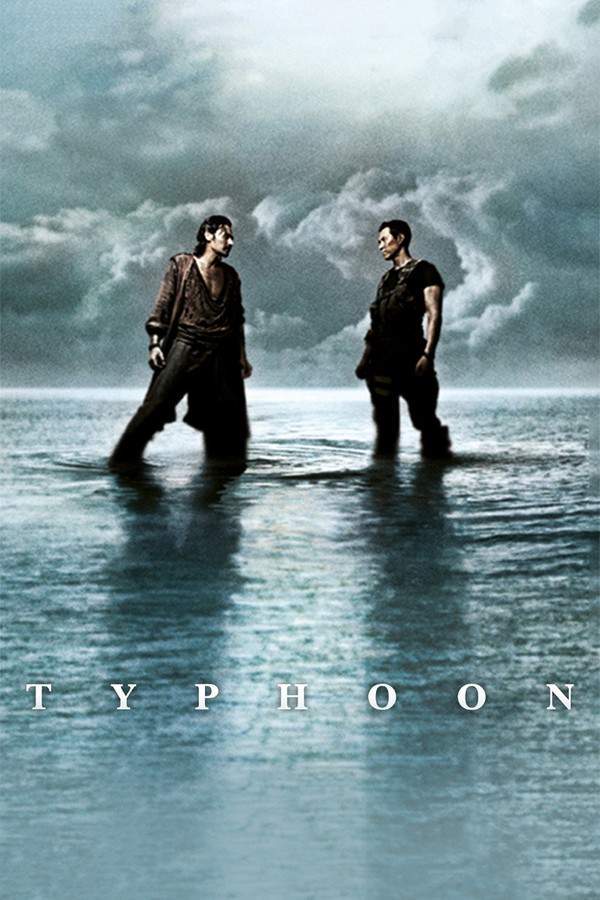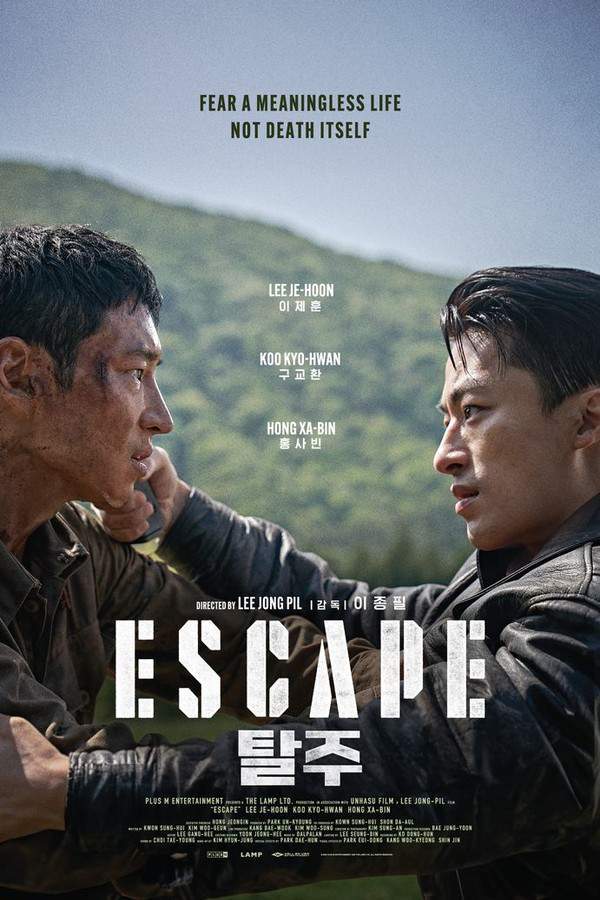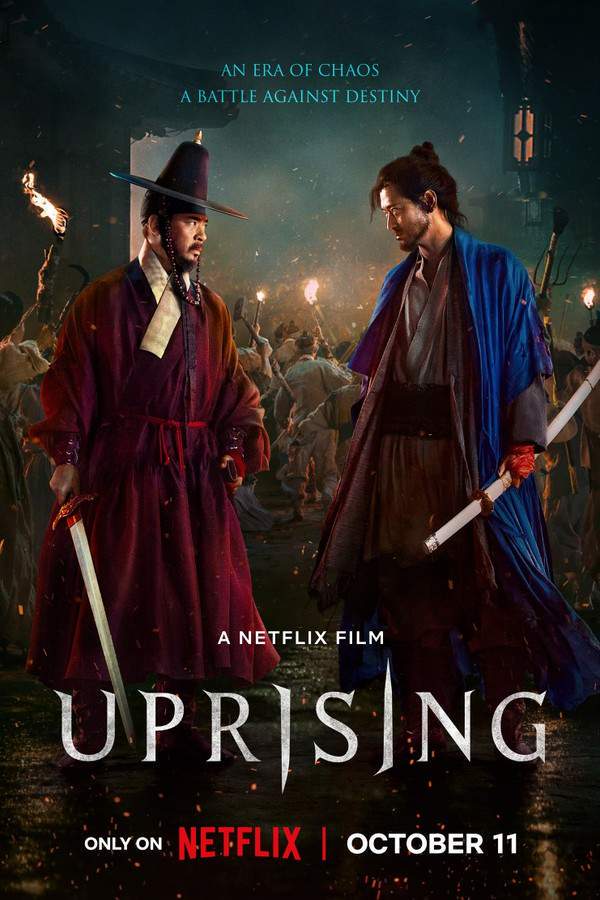
Uprising
Year: 2024
Runtime: 2 h 6 m
Language: korean
Director: Sang Man Kim
Two men, once close friends, find their lives irrevocably altered by war in the Joseon Dynasty. Forced onto opposing sides of a brutal conflict, they must grapple with the painful reality of their fractured relationship and the difficult decisions that led them there.
Warning: spoilers below!
Haven’t seen Uprising yet? This summary contains major spoilers. Bookmark the page, watch the movie, and come back for the full breakdown. If you're ready, scroll on and relive the story!
Uprising (2024) – Full Plot Summary & Ending Explained
Read the complete plot breakdown of Uprising (2024), including all key story events, major twists, and the ending explained in detail. Discover what really happened—and what it all means.
A scholar named Jeong Yeo-Rip had a vision for a world where everyone was treated equally, forming a private community called Great Unity that advocated for the abolishment of slavery. In this progressive society, noblemen and slaves shared meals, trained together in martial arts, and embraced the idea that true harmony was built on equality. Naturally, this revolutionary concept didn’t sit well with King Seonjo, played by Seung-won Cha, whose reign relied on maintaining traditional hierarchies that kept slaves subservient to the noble class. Jeong Yeo-Rip was soon accused of treason, leading to the attack on his community where he ultimately took his own life, leaving behind a profound message that ignited an anti-slavery movement among the populace.
Not long after, we meet Cheon Yeong, a slave portrayed by Gang Dong-Won, who finds himself captured by royal guards for attempting to escape the oppressive life he has endured for over twelve years in the clutches of the Deputy Minister of Defense. His recent attempt to flee is made even worse by the sword of his noble master being found on him—its lineage tied directly to the minister’s prestigious family. The sword, awarded for its martial excellence, complicates Cheon Yeong’s position as he finds himself at the mercy of the law yet again, now facing severe punishment for his perceived theft in addition to his escape.
The unjust nature of society’s laws becomes evident as Cheon Yeong’s story unfolds, revealing how children born to slaves are bound to inherit the same fate. Ironically, he comes from a lineage that held nobility, yet the dire financial strife led his mother to be sold into slavery to repay debts. At the same time, Cheon Yeong is forced into servitude in the very household that once belonged to his ancestors, enduring inhumane treatment as he is subjected to brutal punishments in place of the noble Yi Jong-Ryeo, played by Jeong Min Park, who is being trained as a warrior in his family tradition. The connection between Cheon Yeong and Jong-Ryeo grows more complex as their lives become intertwined—Cheon Yeong secretly teaches Jong-Ryeo martial arts to aid in his training, hoping to receive some reprieve from the brutality he endures.
But as history would have it, new challenges arise. The approach of the Japanese invasion catalyzes a change, as slaves rise against their oppressors inspired by Jeong Yeo-Rip’s teachings. Cheon Yeong confronts the harsh reality of his situation when the Japanese attack brings the political atmosphere crashing down. While he aims to gather an army from the oppressed, Jong-Ryeo is caught in a tangled web of loyalty, betrayal, and misunderstanding—convinced that Cheon Yeong has become a threat after the tragic fall of his family during the chaos.
Amidst the uprising, Cheon Yeong becomes a figure of resistance while Jong-Ryeo finds himself navigating between loyalty to his family and his friendship with Cheon Yeong, further complicated by the betrayal they both experience at the hands of those they trusted. As the battles rage on, and loyalties are tested, Cheon Yeong fights for freedom, gathering support from former slaves and strategically outmaneuvering the forces of the Japanese army led by General Genshin Kikkawa, featured prominently in the saga.
The conflict sparks an ultimate confrontation where personal vendettas and political aspirations collide spectacularly, culminating in a fierce struggle against oppressive powers. Cheon Yeong faces the tragic consequences of misplaced trust, grief, and the betrayal of those closest to him, leading him to undertake a desperate quest for both redemption and revenge. As the storm of war rages on, Cheon Yeong’s call to arms becomes ever urgent, culminating in a revolutionary movement that aims to overthrow King Seonjo and reshape a nation longing for justice. In this riveting tale of struggle, loyalty, and the quest for freedom, hope rises from the ashes of despair, and the dream of equality burns bright in the hearts of the oppressed, led by their indomitable spirit to reclaim not just their lives but their dignity.
Last Updated: January 14, 2025 at 19:25
Ending Explained – What Happens at the End of Uprising?
Still wondering what the ending of Uprising (2024) really means? Here’s a spoiler-heavy breakdown of the final scene, major twists, and the deeper themes that shape the film’s conclusion.
Uprising explores the deep bonds of friendship amid a backdrop of social hierarchy, war, and political corruption. The story follows Cheon-Yeong and Jong-Ryeo, childhood friends from vastly different social classes—Cheon-Yeong being a slave and Jong-Ryeo coming from the powerful military aristocracy. Their friendship begins with Cheon-Yeong teaching Jong-Ryeo how to fight, defying the rigid class system that deems Cheon-Yeong inferior. Their bond endures through many hardships, including betrayal, war, and family tragedy. Jong-Ryeo’s family, driven by societal prejudice, doesn’t free Cheon-Yeong despite their promises, and he is left to fight the Japanese invaders, with Jong-Ryeo promising a better future for him. Tragically, after years of fighting and suffering, Jong-Ryeo and Cheon-Yeong reconcile in their final encounter. Jong-Ryeo, who has come to realize that his hatred and misconceptions were unjustified, asks Cheon-Yeong if they are still friends—an emotional moment that signifies their true bond. In the end, Jong-Ryeo dies from his wounds, but not before reaffirming their friendship, leaving behind a message about the pain caused by social divisions and the possibility of understanding and forgiveness.
On the political side, King Seonjo’s greed and negligence lead to disaster. He colludes with the Japanese, believing it will bring him wealth, but ends up causing widespread suffering. His betrayal and abandonment of his people intensify the chaos, culminating in the revelation that the Japanese are using human parts as war trophies. The film emphasizes how corrupt leadership and social inequalities ultimately perpetuate tragedy.
Despite the devastation, Cheon-Yeong and the survivors establish a community called “Beom Dong” or “A world together,” symbolizing hope for unity. The film ends on a bittersweet note—highlighting that while fictional peace seems achievable in this new society, the cycle of war, greed, and social injustice always threatens to tear it apart again. Ultimately, the ending suggests that the true fight isn’t just against external enemies but also against the enduring divisions within society, with hope for a better future hanging by a fragile thread.```
Last Updated: June 25, 2025 at 09:03
Explore Movie Threads
Discover curated groups of movies connected by mood, themes, and story style. Browse collections built around emotion, atmosphere, and narrative focus to easily find films that match what you feel like watching right now.
Gritty Historical Revolution Movies Like Uprising
Epic, violent struggles for liberation against oppressive regimes.If you liked the brutal fight for freedom in Uprising, explore more movies about desperate historical revolts. These films share a dark tone, high-intensity action, and heavy emotional weight, portraying the high-stakes struggle against oppression in epic, often tragic, detail.
Narrative Summary
Narratives in this thread follow a clear arc: the establishment of a cruel, hierarchical system; the brutalization of a protagonist or group; a catalyst sparking rebellion; and the ensuing violent conflict. The journey is defined by high stakes, tragic losses, and the heavy moral burden of fighting for a cause greater than oneself.
Why These Movies?
These movies are grouped by their shared core premise of a violent historical uprising. They create a coherent experience through a consistently dark tone, high emotional intensity, and a focus on the brutal realities of fighting for social justice, resulting in a gripping and somber viewing experience.
Movies About Wartime Friend Betrayal Like Uprising
Stories where war forces friends onto opposing sides with tragic consequences.If you were moved by the fractured friendship in Uprising, discover other films that center on friends turned enemies by war. These stories share a bittersweet or tragic ending feel, heavy emotional weight, and a complex exploration of loyalty and betrayal amidst chaos.
Narrative Summary
The narrative pattern involves establishing a strong, positive friendship in peacetime, which is then severely tested when war breaks out. The characters are forced onto opposing sides, leading to moral dilemmas, painful confrontations, and ultimately a bittersweet or tragic resolution that highlights the personal cost of the larger conflict.
Why These Movies?
These films are grouped by their central emotional conflict: the destruction of a close friendship by war. They share a heavy emotional weight, a focus on character-driven drama over pure action, and a universally relatable theme of loss that transcends their specific historical or genre settings.
Unlock the Full Story of Uprising
Don't stop at just watching — explore Uprising in full detail. From the complete plot summary and scene-by-scene timeline to character breakdowns, thematic analysis, and a deep dive into the ending — every page helps you truly understand what Uprising is all about. Plus, discover what's next after the movie.
Uprising Timeline
Track the full timeline of Uprising with every major event arranged chronologically. Perfect for decoding non-linear storytelling, flashbacks, or parallel narratives with a clear scene-by-scene breakdown.

Characters, Settings & Themes in Uprising
Discover the characters, locations, and core themes that shape Uprising. Get insights into symbolic elements, setting significance, and deeper narrative meaning — ideal for thematic analysis and movie breakdowns.

Uprising Ending Explained
What really happened at the end of Uprising? This detailed ending explained page breaks down final scenes, hidden clues, and alternate interpretations with expert analysis and viewer theories.

Uprising Spoiler-Free Summary
Get a quick, spoiler-free overview of Uprising that covers the main plot points and key details without revealing any major twists or spoilers. Perfect for those who want to know what to expect before diving in.

More About Uprising
Visit What's After the Movie to explore more about Uprising: box office results, cast and crew info, production details, post-credit scenes, and external links — all in one place for movie fans and researchers.

Similar Movies to Uprising
Discover movies like Uprising that share similar genres, themes, and storytelling elements. Whether you’re drawn to the atmosphere, character arcs, or plot structure, these curated recommendations will help you explore more films you’ll love.
Explore More About Movie Uprising
Uprising (2024) Scene-by-Scene Movie Timeline
Uprising (2024) Movie Characters, Themes & Settings
Uprising (2024) Ending Explained & Theories
Uprising (2024) Spoiler-Free Summary & Key Flow
Movies Like Uprising – Similar Titles You’ll Enjoy
The Age of Shadows (2016) Ending Explained & Film Insights
The Battleship Island (2017) Plot Summary & Ending Explained
Uprising (2001) Full Summary & Key Details
Memories of the Sword (2015) Full Movie Breakdown
The Fortress (2017) Full Movie Breakdown
Hansan: Rising Dragon (2022) Complete Plot Breakdown
Typhoon (2006) Film Overview & Timeline
Escape (2024) Full Movie Breakdown
Mr. Sunshine (1000) Full Movie Breakdown
The Battle: Roar to Victory (2019) Complete Plot Breakdown
My Country: The New Age (1000) Ending Explained & Film Insights
May 18 (2007) Ending Explained & Film Insights
The Swordsman (2020) Film Overview & Timeline
The Uprising (1966) Spoiler-Packed Plot Recap
The Uprising (1999) Plot Summary & Ending Explained

